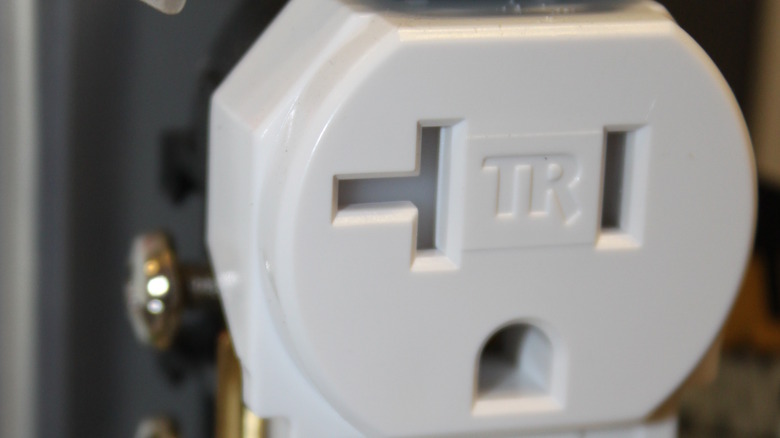Wall sockets in your home come in all shapes and forms. Some electrical outlets have a T-shaped hole to indicate that they’re rated at 20A, while others feature USB ports to make charging your electronics more convenient. Grounded outlets — those with three holes making a face — are also a common sight around the house and are made to protect you from electrical shock.
Then, there are the tamper-resistant receptacles (TRRs). To the untrained eye, they look exactly like a grounded outlet. But once you plug into them, you’ll realize that they’re slightly different, as you need to apply more effort than usual. This type of socket isn’t designed willy-nilly; the electrical outlet is hard to plug into because it actually serves an important purpose: to prevent kids from playing with it and getting shocked. That’s why they’re called tamper-resistant. Let’s go over how TRRs actually work and when you should use them in your home.
What is a tamper-resistant receptacle?
A tamper-resistant receptacle (TRR) is a type of electrical outlet primarily designed for child safety. Aside from the typical TR marking between its vertical slots, what sets this socket apart is the integrated shutter mechanism that keeps both openings closed when not in use. It’s unlike grounded outlets, where both slots are wide open and exposed all the time. In a TRR, you can’t insert an object like a key, hairpin, or fork into just one of the openings. It will remain blocked. Instead, you need a two-pin prong like a plug to open both slots.
How a TRR keeps the openings covered is simple: a spring is placed between the shutters and requires equal pressure from both ends at the same time to get them open. If you try pushing just one side of the spring, it won’t budge. Compared to a standard socket cover that’s easily removed, the TRR mechanism is much more robust in protecting curious kids from harming themselves.
That’s why in the National Electrical Code, 2008 edition, tamper-resistant receptacles were introduced as a requirement in homes. TRRs should be installed on the walls of all dwelling spaces, above the kitchen countertops and island, above bathroom basins, and in balconies, porches, laundry areas, basements, garages, and hallways.








